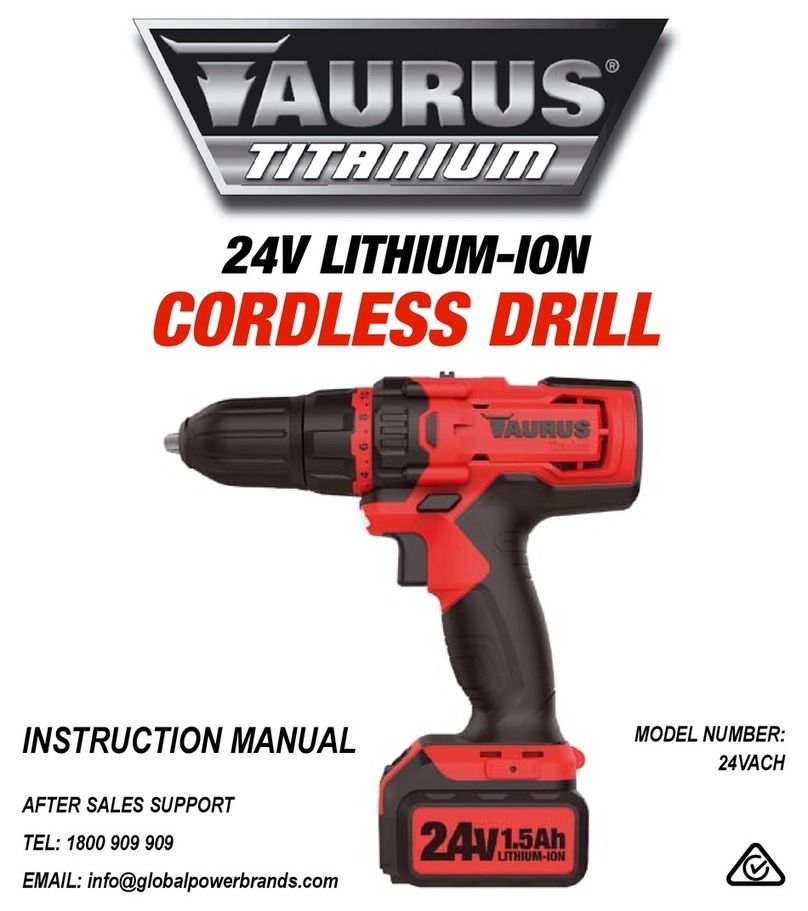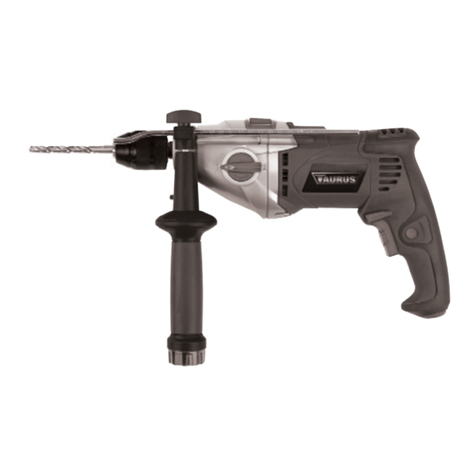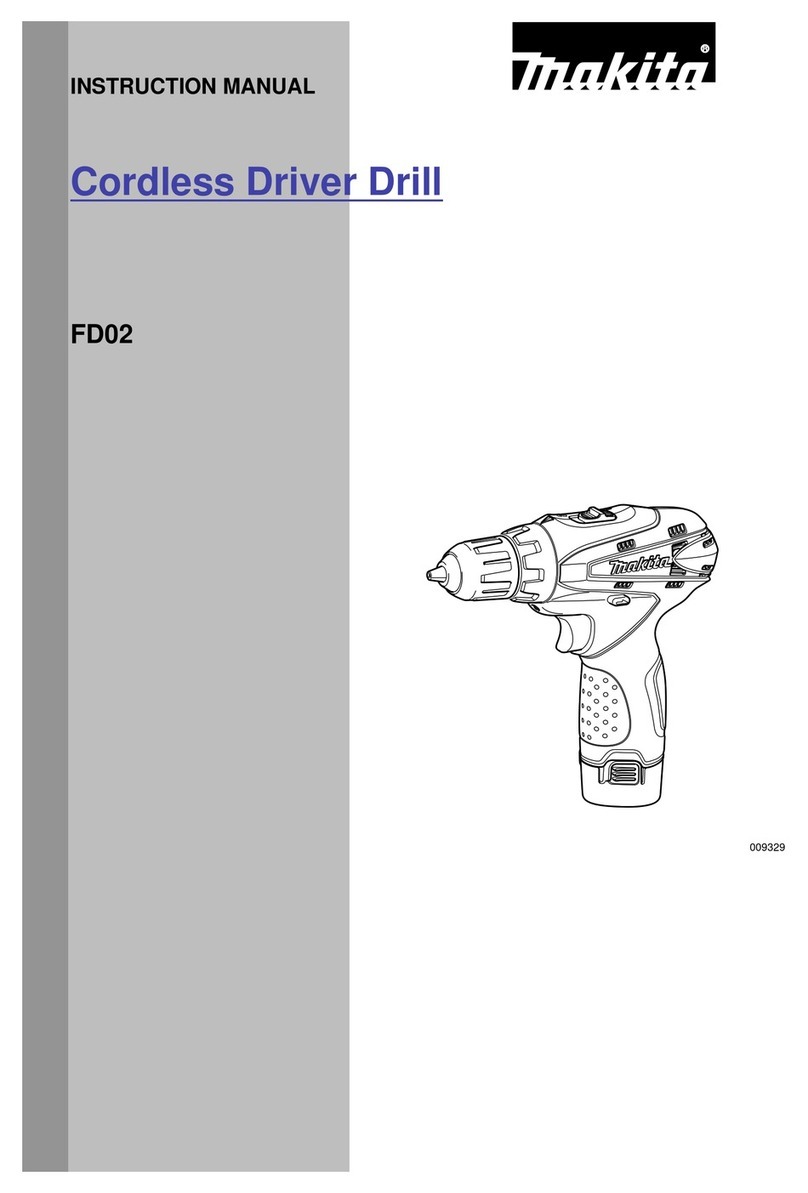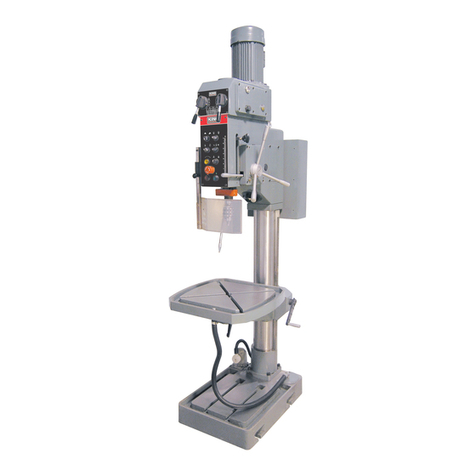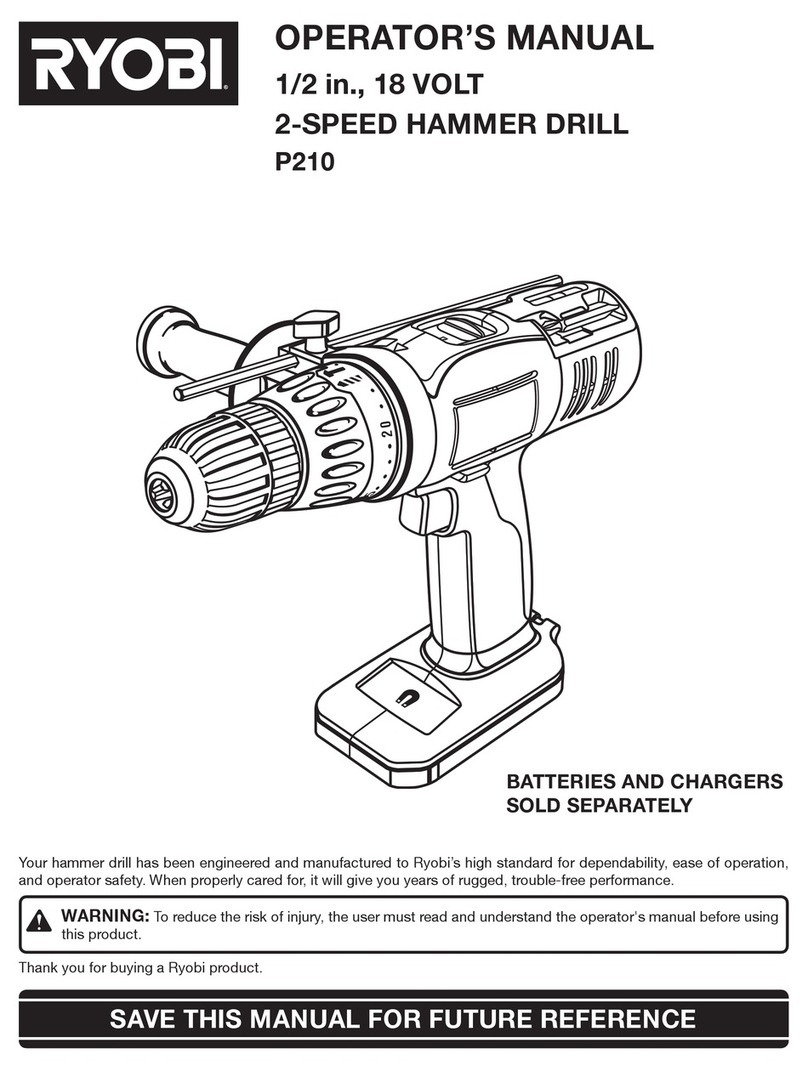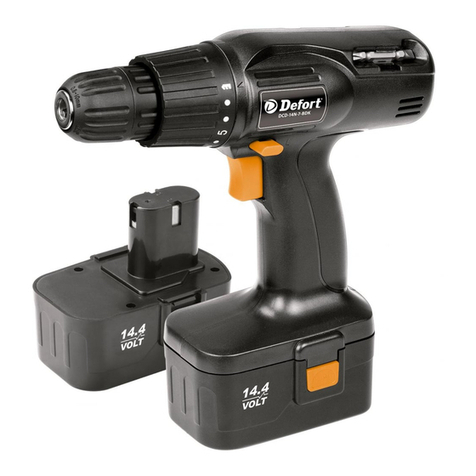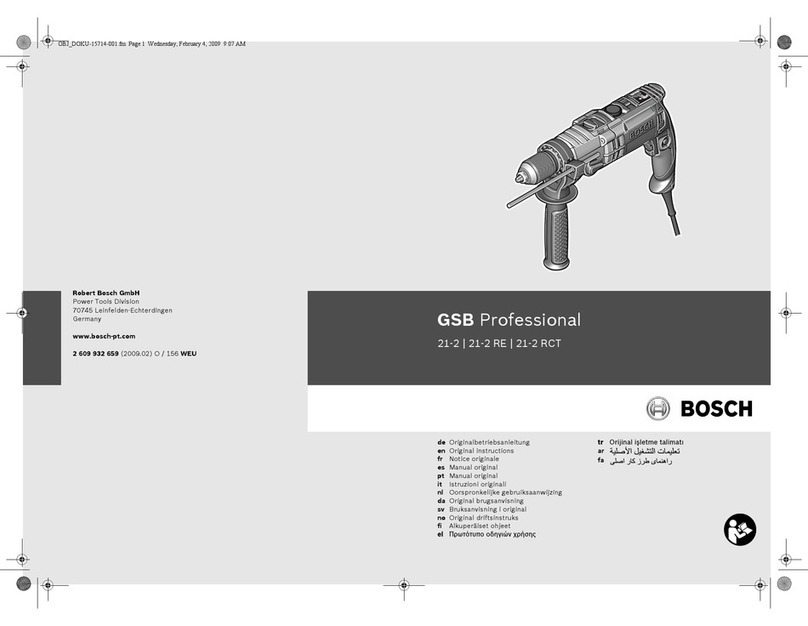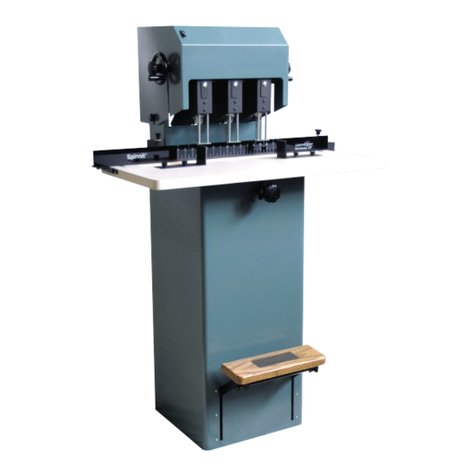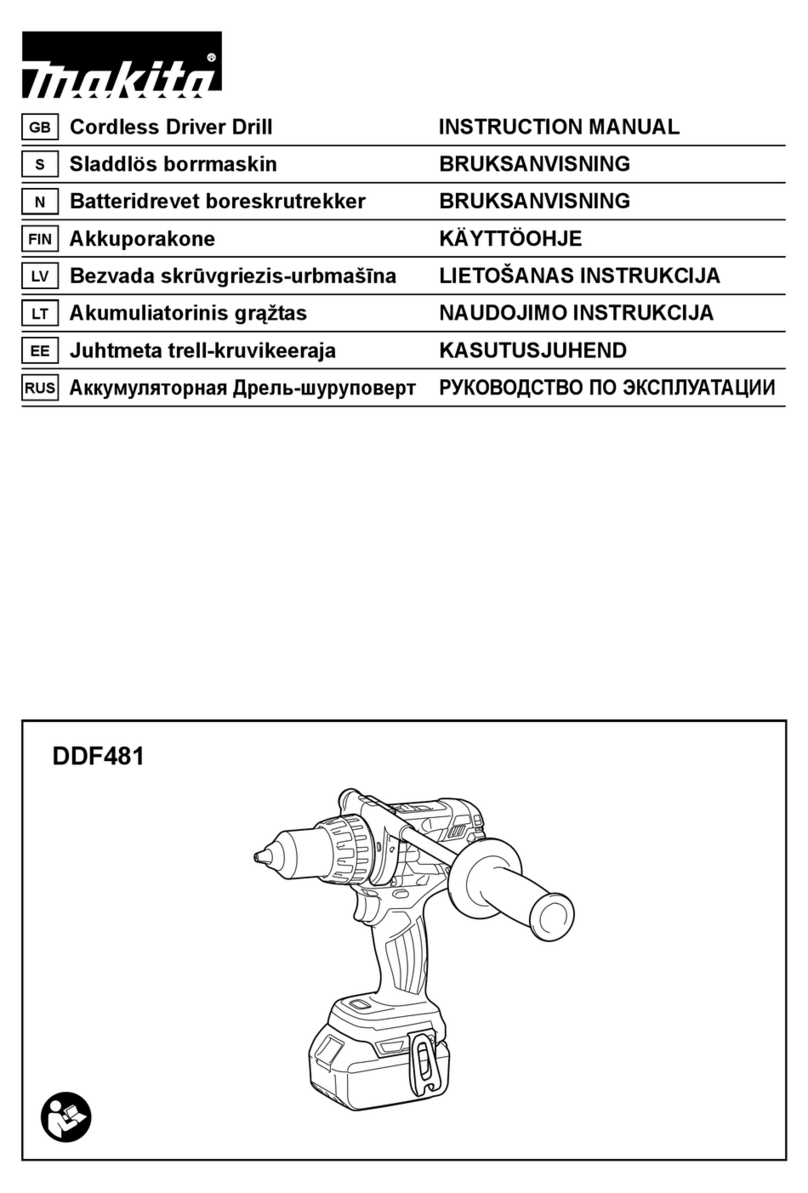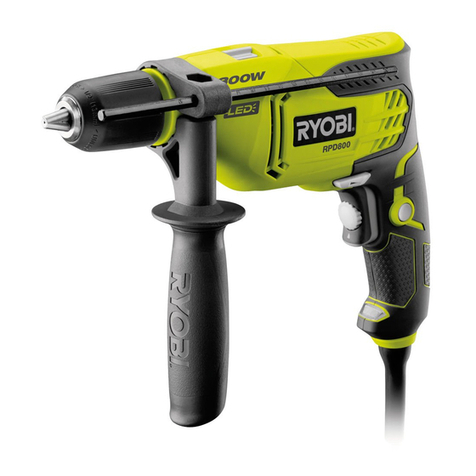Taurus KCSB 1102 User manual

N26704
1050W
IMPACT DRILL
INSTRUCTION MANUAL
AFTER SALES SUPPORT
TEL: 1300 922 271
EMAIL: [email protected]
MODEL NUMBER KCSB 1102

Impact Drill
What your 1 year warranty means
Great care has gone into the manufacture of this product and it should therefore provide you with years
of good service when used properly. In the event of product failure within its intended use over the
once it has been brought to our attention. In the unlikely event of such an occurrence, or if you require
any information about the product, please contact us via our after sales support services, details of
which can be found in this manual and on the product itself.
Welcome Section
Congratulations on choosing to buy a TAURUS® product.
All products brought to you byTAURUS® are manufactured to the highest standards of performance and
safety, and, as part of our philosophy of customer service and satisfaction, are backed by our
comprehensive 1Year Warranty.
We hope you will enjoy using your purchase for many years to come.
Table of Contents
1. General safety rules
2. Safety regulations
3. Layout
4. Items supplied
5. Proper use
6. Technical data
7. Before starting the machine
8. Operation
9. Replacing the power cable
10. Cleaning, maintenance and ordering of spare parts
11. Disposal and recycling
12. Storage
2
After Sales Support TEL: 1300 922 271 EMAIL: service.australia@einhell.com




1. GENERAL SAFETY RULES
SAVE THESE INSTRUCTIONS
1. Work area
a. Keep work area clean and well lit. Cluttered and
dark areas invite accidents.
b. Do not operate power tools in explosive
atmospheres, such as in the presence of
Power tools
create sparks which may ignite the dust or fumes.
c. Keep children and bystanders away while
operating a power tool. Distractions can cause
you to lose control.
2. Electrical safety
a. Power tools plugs must match the outlet.
Never modify the plug in any way. Do not use
any adapter plugs with earthed (grounded)
outlets will reduce risk of electric shock.
b. Avoid body contact with earthed or grounded
surfaces such as pipes, radiators, ranges and
refrigerators. There is an increased risk of electric
shock if your body is earthed or grounded.
c. Do not expose power tools to rain or wet
conditions. Water entering a power tool will
increase the risk of electric shock.
d. Do not abuse the cord. Never use the cord
for carrying, pulling or unplugging the power
tool. Keep cord away from heat, oil, sharp edges
or moving parts. Damaged or entangled cords
increase the risk of electric shock.
e. When operating a power tool outdoors, use an
extension cord suitable for outdoor use. Use of
a cord suitable for outdoor use reduces the risk
of electric shock.
3. Personal safety
a. Stay alert, watch what you are doing and use
common sense when operating a power tool. Do
not use a power tool while you are tired or under
A
moment of inattention while operating power
tools may result in serious personal injury.
b. Use safety equipment. Always wear eye
protection. Safety equipment such as dust
mask, non-skid safety shoes, hard hat, or hearing
protection used for appropriate conditions will
reduce personal injuries.
c. Avoid accidental starting. Ensure the switch is in
the off-position before plugging in. Carrying
plugging in power tools that have the switch on
invites accidents.
d. Remove any adjusting key or wrench before
turning the power tool on. A wrench or a key left
attached to rotating part of the power tool may
result in personal injury.
e. Do not overreach. Keep proper footing and
balance at all times. This enables better control
of the power tool in unexpected situations.
f. Dress properly. Do not wear loose clothing or
jewellery. Keep your hair, clothing and gloves
away from moving parts. Loose clothes,
jewellery or long hair can be caught in moving
parts.
g. If devices are provided for the connection of
dust extraction and collection facilities, ensure
these are connected and properly used. Use of
these devices can reduce dust-related hazards.
4. Power tool use and cars
a. Do not force the power tool. Use the correct
power tool for your application. The correct
power tool will do the job better and safer at the
rate for which it was designed.
b. Do not use the power tool if the switch does not
turn it on and off. Any power tool that cannot be
controlled with the switch is dangerous and must
be repaired.
c. Disconnect the plug from the power source and/
or the battery pack from the power tool before
making any adjustments, changing accessories,
or storing power tools. Such preventive safety
measures reduce the risk of starting the power
tool accidentally.
d. Store idle power tools out of the reach of
children and do not allow persons unfamiliar
with the power tool or these instructions to
operate the power tool. Power tools are
dangerous in the hands of untrained users.
e. Maintain power tools. Check for misalignment
or binding of moving parts, breakage of parts
and any other condition that may affect the
power tools operation. If damaged, have the
power tool repaired before use. Many accidents
are caused by poorly maintained power tools.
f. Keep cutting tools sharp and clean. Properly
maintained cutting tools with sharp cutting
edges are less likely to bind and are easier to
control.
g. Use the power tool, accessories and tool bits
etc. in accordance with these instructions and
in the manner intended for the particular type
of power tool, taking into account the working
conditions and the work to be performed. Use of
the power tool for operations different from
those intended could result in a hazardous
situation.
5. Service
a.
repair person using only identical replacement
parts. This will ensure that the safety of the
power tool is maintained.
6
WARNING! Read all instructions Failure to
follow all instructions listed below may result
term ’’power tool’’ in all of the warnings listed
below refers to your mains-operated (corded)
power tool or battery-operated (cordless) power
tool.
After Sales Support TEL: 1300 922 271 EMAIL: service.australia@einhell.com

Important!
When using equipment, a few safety
precautions must be observed to avoid injuries
and damage. Please read the complete
operating manual with due care. Keep this
manual in a safe place, so that the information
is available at all times. If you give the
equipment to any other person, give them
these operating instructions as well.
We accept no liability for damage or accidents
which arise due to non-observance of these
instructions and the safety information.
2. Safety regulations:
The corresponding safety information can be found
in the enclosed booklet.
CAUTION
Read all safety regulations and instructions.
Any errors made in following the safety
regulations and instructions may result in an
Keep all safety regulations and instructions
in a safe place for future use.
1. Keep your work area tidy. Untidiness in the
workplace can lead to risk of accidents.
2.
surrounding environment. Do not expose
electrical appliances to rain. Do not use
electric tools in damp or wet environments.
Provide good lighting. Do not use electric
3. Protect against electric shock. Avoid bodily
contact with earthed parts, for example
pipes, heaters, ovens and fridges.
4. Keep other people away! Do not let other
people gain access to the tool or cable,
keep them away from your workplace.
5. Store the equipment safely and securely.
Unused equipment must be stored in a dry,
locked room, out of the reach of children.
6. Do not overburden the tool. It will work
better and safer when used within its quoted
capacity range.
7. Use the correct tool. Do not use weak tools
or attachments for heavy duty work. Never
use the electric tool for purposes other than
that for which it is designed, for example
do not use the hand-held circular saw to fell
trees or cut branches.
8. Wear suitable work clothes. Do not wear
loose clothing or jewellery. It could get
caught in moving parts. Rubber gloves and
non-slip shoes are recommended when
working outdoors. If you have long hair,
wear a hair-net.
9. Wear safety goggles. Use a dust mask when
working on dusty jobs.
10. Do not use the cable for purposes other
than that for which it is designed. Do not
carry the tool by the cable and do not use
it to pull the plug out of the socket. Do not
carry the charger by the cable and do not
use is to pull the plug out of the socket.
11. Secure the workpiece. Use clamps or a
vice to hold the workpiece securely. This is
safer than using your hand, and also makes
it possible to use the machine with both
hands.
12. Take care that your feet are a stable
distance apart. Avoid abnormal working
postures. Make sure you stand squarely and
keep your balance at all times.
13. Take good care of your tools. Keep
your tools sharp and clean to keep them
maintenance instructions and the notes
about changing tools. Check the plug and
cable regularly, and if they are damaged,
Check extension leads regularly andreplace
these if damaged. Keep handles dry, clean
and free from oil and grease.
14. Pull the power plug. When not in use, before
maintenance work or when changing tools,
such as saw blade, drill and machine tools of
any kind.
7
Caution - Read the operating
instructions to reduce the risk of injury.
Wear ear-muffs.
The impact of noise can cause damage
to hearing.
Wear a breathing mask.
Dust which is injurious to health can be
generated when working on wood and
other materials.
Never use the device to work on any
materials containing asbestos!
Wear safety goggles.
Sparks generated during working or
splinters, chips and dust emitted by the
device can cause
loss of sight.
To avoid damaging the gearbox, the
drill / hammer drill selector switch should
only be movedwhen the machine is at a
standstill.
Change the gear only when the drill is
at a standstill. If you fail to observe this
point, the gearing may be damaged.

8
15. Always remove keys and wrenches
after use. Before switching on, make sure
that all keys and wrenches have been
removed from the tool.
16. Avoid unsupervised operation.
Never carry mains-powered tools with your
OFF when connecting the tool to the mains.
17. Outdoor use of extension cables.
For outdoor use, only use approved and
appropriately labelled extension cables.
18. Be alert at all times.
Observe your work. Work carefully. Never
use the electric tool when you are
distracted.
19. Check the appliance for damage.
Before using the equipment further, check
that safety equipment or slightly damaged
parts are in good working order and function
correctly. Check that the moving parts are
working correctly, that they do not jam, and
that no parts are damaged. Make sure that
the equipment remains safe to use.
Damaged safety devices and parts must be
repaired or replaced by experts in a
customer service workshop, unless
otherwise stated in the manual. Damaged
switches must be replaced by a customer
service workshop. Do not use equipment for
which the on-off switch does not correctly
function.
20. Important!
For your own safety, only use accessories
and auxiliaries which are stated in the
operating instructions or which have been
recommended or indicated by the
manufacturer. Use of any other attachments
or accessories than those stated in the
operating instructions or in the catalogue
could lead to personal injury.
21. Repairs should only be done by an
expert. This electric tool complies with the
pertinent safety regulations. Repair work
may only be carried out by an electrician.
Otherwise there is a risk of accidents for the
operator.
22. Attach the dust extraction system.
If there are apparatuses available for the
attachment of the dust extraction system,
make sure these are connected and used.
3. Layout
1. Drill chuck
2. Drill depth stop
3. Drill/hammer drill selector switch
4. Locking button
5. ON/OFF switch
6. Speed controller
7. Clockwise/Counter-clockwise switch
8. Additional handle
9. Dust extraction adapter
10. Gear selector switch
11. Dust extraction
4. Items supplied
•Open the packaging and take out the
equipment with care.
•Remove the packaging material and any
packaging and/or transportation braces (if
available).
•Check to see if all items are supplied.
•Inspect the equipment and accessories for
transport damage.
•If possible, please keep the packaging until
the end of the guarantee period.
IMPORTANT
The equipment and packaging material are not
toys. Do not let children play with plastic bags,
foils or small parts. There is a danger of
swallowing or suffocating!
•Hammer drill
•Drill depth stop
•Dust extraction adapter
•Dust extraction
•Original operating instructions
•Safety instructions
5. Proper use
The drill is designed for drilling holes into wood,
iron, non-ferrous metals and rock using the
appropriate bits.
The equipment is to be used only for its
prescribed purpose. Any other use is deemed to
be a case of misuse. The user / operator and not
the manufacturer will be liable for any damage or
injuries of any kind caused as a result of this.
Please note that our equipment has not been
designed for use in commercial, trade or
industrial applications. Our warranty will be
voided if the machine is used in commercial,
trade or industrial businesses or for equivalent
purposes.

9
Keep the noise emissions and vibrations to a
minimum.
•Only use appliances which are in perfect
working order.
•Service and clean the appliance regularly.
•Adapt your working style to suit the
appliance.
•Do not overload the appliance.
•Have the appliance serviced whenever
necessary.
•Switch the appliance off when it is not in
use.
•Wear protective gloves.
Residual risks
Even if you use this electric power tool in
accordance with instructions, certain residual
risks cannot be rules out. The following hazards
may arise in connection with the equipment’s
construction and layout:
1. Lung damage if no suitable protective dust
mask is used.
2. Damage to hearing if no suitable ear
protection is used.
3. Health damage caused by hand-arm
vibrations if the equipment is used over a
prolonged period or is not properly guided
and maintained.
Warning! The electric power tool generates an
passively impede medical implants. To reduce
the risk of serious or fatal injuries, we recommend
persons with medical implants to consult their
doctor and the manufacturer of the medical
implant prior to using the equipment.
7. Before starting the
equipment
Before you connect the equipment to the mains
supply make sure that the data on the rating
plate are identical to the mains data.
Always pull the power plug before making
adjustments to the equipment.
7.1. Fitting the additional handle (Fig. 2-3/Item
8)
The additional handle (8) enables you to achieve
better stability whilst using the hammer drill. Do
not use the tool without the additional handle.
The additional handle (8) is secured to the ham-
mer drill by a clamp. During the handle clockwise
tightens this clamp. Turning it anti-clockwise will
release the clamp.
6. Technical data
Mains voltage: 230 V ~ 50Hz
Power input: 1050W
Idling speed 1: 0 - 1,100 min-1
Idling speed 2: 0 - 3,000 min-1
Drilling capacity: Concrete 16 mm
Steel 13 mm
Wood 40 mm
Protection class: II /
Weight: 3.5 kg
Sound and vibration (drilling)
Sound and vibration values were measured in
accordance with EN 6074
LpA sound pressure level 88 dB(A)
KpA uncertainty 3 dB
LWA sound power level 99 dB(A)
KWA uncertainty 3 dB
Sound and vibration (hammer drilling)
Sound and vibration values were measured in
accordance with EN 6074
LpA sound pressure level 94 dB(A)
KpA uncertainty 3 dB
LWA sound power level 105 dB(A)
KWA uncertainty 3 dB
Wear ear-muffs.
The impact of noise can cause damage to
hearing.
Total vibration values (vector sum of three
directions) determined in accordance with EN
60745.
Hammer drilling in concrete
Vibration emission value
ah, ID = 13.8 m/s2
K uncertainty = 1.5 m/s�
Drilling in metal
Vibration emission value ah, D = 3.8 m/s 2
K uncertainty = 1.5 m/s 2
Additional information for electric power tools
Warning!
accordance with a standardized testing method.
It may change according to how the electric
value in exceptional circumstances.
compare the equipment with other electric power
for initial assessment of a harmful effect.
2

10
•Remove the dust extraction system (11) by
following the above in reverse.
•Fit the additional handle (8) on the machine
as described in 6.1. Please note that the
left-hand side of the machine if the dust
•
to the machine even if the additional handle
•If the dust extraction system (11) is not
required, the cover (A) and the sealing cap
(8).
8. Operation
8.1 ON/OFF switch (Fig. 11/Item 5)
•
7.3).
•Connect the mains plug to a suitable socket.
•Position the drill in the position you wish to
drill.
To switch on:
Press the ON/OFF switch (5)
Continuous operation:
Secure the ON/OFF switch (5) with the locking
button (4).
To switch off:
8.2 Adjusting the speed (Fig. 11/Item 5)
•
using the tool.
•Select the speed by applying a greater or
lesser pressure to the ON/OFF switch (5).
•Select the correct speed: The most suitable
•speed depends on the workpiece, the type
of use and the drill bit used.
•Low pressure on the ON/OFF switch (5):
Lower speed (suitable for: small screws and
soft materials)
•Greater pressure on the ON/OFF switch (5):
•Higher speed (suitable for large/long screws
and hard materials)
Tip: Start drilling holes at low speed. Then
increase the speed in stages.
•The drill bit is easier to control when
starting the hole and will not slide away.
•You avoid drilling messy holes (for example
in tiles).
•
8.3 Preselecting the speed (Fig. 11/Item 6)
•The speed setting ring (6) enables you
OFF switch (5) can only be pressed to the
•Set the speed using the setting ring (6) on
the ON/OFF switch (5).
•Do not attempt to make this setting whilst
the drill is in use.
•The supplied additional handle (8) must
opened by turning the handle until it is wide
enough for the additional handle to be slid
over the chuck (1) and on to the hammer
drill.
•After you have positioned the additional
handle (8), turn it to the most comfortable
working position for you.
•Now turn the handle in the opposite
direction again until the additional handle
is secure.
•The additional handle (8) is suitable for both
lefthanded and right-handed users.
7.2 Fitting and adjusting the depth stop (Fig. 4/
Item 2)
•Undo the thumb screw (a) on the additional
handle (8) and insert the depth stop (2) in
the hole of the additional handle.
•Set the depth stop and retighten the thumb
screw.
•Now drill the hole until the depth stop
touches the workpiece.
7.3 Fitting the drill bit (Fig. 10)
•Always pull the power plug before making
adjustments to the equipment.
•Release the depth stop as described in 6.2
and push it towards the additional handle.
This provides free access to the chuck (1).
•
chuck (1).
•Open the chuck (1). The drill bit opening
•Select a suitable drill bit. Push the drill bit as
far as possible into the chuck opening.
•Close the chuck (1). Check that the drill bit is
secure in the chuck (1).
•Check at regular intervals that the drill bit or
tool is secure (pull the mains plug).
7.4 Fitting the dust extraction system (Fig. 5-9)
•
the additional handle (8). It can also be used
in combination with the depth stop (2). This
prevents the work area becoming very dirty.
•Release the cover (A) and the sealing cap
(B) by turning the additional handle (8).
Several drill bits can be stored in the sealing
cap (B) to save space (Fig. 5-6).
•Screw the dust extractor adapter (9) on to
the additional handle (8) from underneath.
•Now place the dust extraction system (11)
on to the additional handle (8) as shown in
Fig. 7 – 8 and secure it by turning it.
•Important. There are detents on the
cover (A) and the dust extraction system
(11) which must be engaged in the
corresponding recesses on the additional
handle (8) before the cover (A) or dust
extraction system (11) can be turned and
locked.

8.4 Clockwise/Counter-clockwise switch
(Fig. 11/Item 7)
•Change switch position only when the drill is
at a standstill!
•Switch the direction of the hammer drill using
the clockwise/counter-clockwise switch (7):
Direction Switch Position
Clockwise (forwards and
drill)
Pushed in to the right
Counter-clockwise
(reverse)
Pushed in to the left
8.5 Drill / hammer drill selector switch
(Fig. 12/Item 3)
Change switch position only when the drill is at a
standstill!
Drill
Drill / hammer drill selector switch (3) in the drill
position. (Position A)
Use for: Wood, metal, plastic
Hammer drill
8.6 Defining the speed range (Fig.13)
Drill / hammer drill selector switch (3) in the
hammer drill position. (Position B)
Use for: Concrete, rock, masonry
The speed selector switch (9) enables you to work
Switch position, setting 1 (A)
Speed range: High torque, low speed
Switch position, setting 2 (B)
Speed range: Low torque, high speed
Important. Do not attempt to make this setting
whilst the drill is in use.
8.7 Tips for working with your hammer drill
8.7.1 Drilling concrete and masonry
•Switch the Drill/Hammer drill selector switch
(3) to position B (Hammer drill).
•Always use carbide drill bits and a high speed
setting for drilling into masonry and concrete.
8.7.2 Drilling steel
•Switch the drill / hammer drill selector switch
(3) to position A (drill).
•Always use HSS drill bits (HSS = high speed
steel) and a low speed setting for drilling steel.
•We recommend that you lubricate the hole
unnecessary drill bit wear.
11
8.7.3 Starting holes
If you wish to drill a deep hole in a hard material
(such as steel), we recommend that you start the
hole with a smaller drill bit.
8.7.4 Drilling tiles
•To start the hole, switch the drill / hammer
drill selector switch (3) to position A (drill).
•Switch the drill / hammer drill selector switch
(3) to position B (hammer drill) as soon as the
drill bit has passed through the tiles.
8.8 Drilling with the dust extraction system (11)
Use the dust extraction system only for drilling into
concrete, bricks and masonry since wood or plastic
chips may block the extraction system. Do not drill
into metallic materials since hot metal chips can
damage the dust extraction system.
•Fit the dust extraction system (11); see point
7.4.
•Connect the dust extractor adapter (9) to the
suction hose of a suitable vacuum cleaner.
The vacuum cleaner must be suitable for
handling the substance that will be extracted.
Harmful dust must not be extracted using the
dust extraction system (11). Use on materials
containing asbestos is prohibited!
•Set the required drilling depth (see point 7.2).
•Mark the drilling position.
•Tip: To prevent the wall being soiled, you
can mask the area around the transparent
extraction opening with masking tape. Before
you use the masking tape, test whether the
tape can be removed easily from the wall
again in a place that it not easily visible.
•Switch on the vacuum cleaner and place the
transparent cover on the front of the dust
extraction system (11) over the drilling point
so that the drill bit is in front of the mark.
Ensure that the transparent cover is in contact
with the workpiece or wall.
•Press the drill bit and machine gently against
the mark whilst the ON/OFF switch (5) is still
set to off.
•Then drill the hole. See the instructions in
point 8.7 for more details.
•The dust extraction system (11) must be
cleaned after at least every 15 holes. For this
purpose remove the dust extraction system
(11) and the additional handle (8) as described
in points 7.4 and 7.1. Clean the dust extraction
system (11) and the interior of the additional
handle (8) by carefully tapping them or
blowing them through with low pressure
compressed air.
•If the extraction performance is poor, check
the dust extraction system (11) for possible
blockages or dirt.ssions of wood dust when
used in closed rooms.
•The transparent cover is enclosed in a
protective ring to prevent it from suffering
damage. This protective ring should be
replaced as soon as it is damaged or worn.

m
12
'@S^ZOQW\UbVS^]eS`QOPZS
If the power cable for this equipment is damaged,
it must be replaced by the manufacturer or its
aftersales service or similarly trained personnel to
avoid danger.
1ZSO\W\U[OW\bS\O\QSO\R
]`RS`W\U]Ta^O`S^O`ba
Always pull out the mains power plug before
starting any cleaning work.
1ZSO\W\U
•Keep all safety devices, air vents and the
motor housing free of dirt and dust as far as
possible.
•Wipe the equipment with a clean cloth or
blow it with compressed air at low pressure.
•We recommend that you clean the device
using it.
•Clean the equipment regularly with a moist
cloth and some soft soap. Do not use cleaning
agents or solvents; these could attack the
plastic parts of the equipment. Ensure that no
water can seep into the device.
1O`P]\P`caVSa
In case of excessive sparking, have the carbon
Important! The carbon brushes should not be rep
!;OW\bS\O\QS
There are no parts inside the equipment which
require additional maintenance.
2Wa^]aOZO\R`SQgQZW\U
The unit is supplied in packaging to prevent its
being damaged in transit. This packaging is raw
material and can therefore be reused or can be
returned to the raw material system.
The unit and its accessories are made of various
types of material, such as metal and plastic.
Defective components must be disposed of as
special waste. Ask your dealer or your local
council.
Ab]`OUS
Store the equipment and accessories out of
children’s reach in a dark and dry place at
above freezing temperature. The ideal storage
temperature is between 5 and 30 °C. Store the
electric tool in its original packaging.
$
/`b<`(" #'&%#M
Other manuals for KCSB 1102
1
This manual suits for next models
1
Table of contents
Other Taurus Drill manuals
Popular Drill manuals by other brands
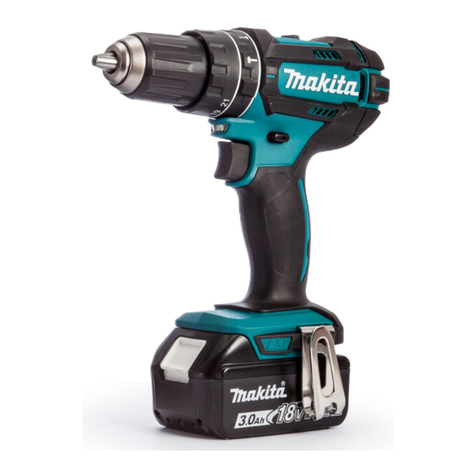
Makita
Makita DHP482 instruction manual

Scheppach
Scheppach DP60 instruction manual
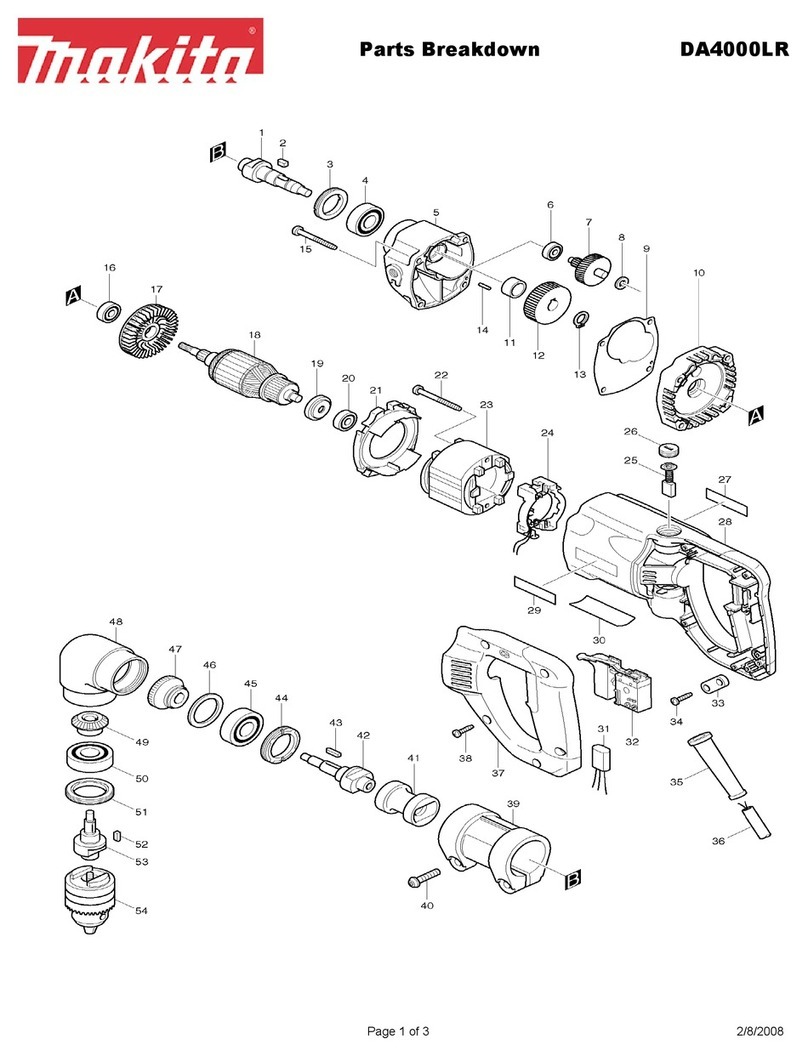
Makita
Makita DA4000LR Parts Breakdown
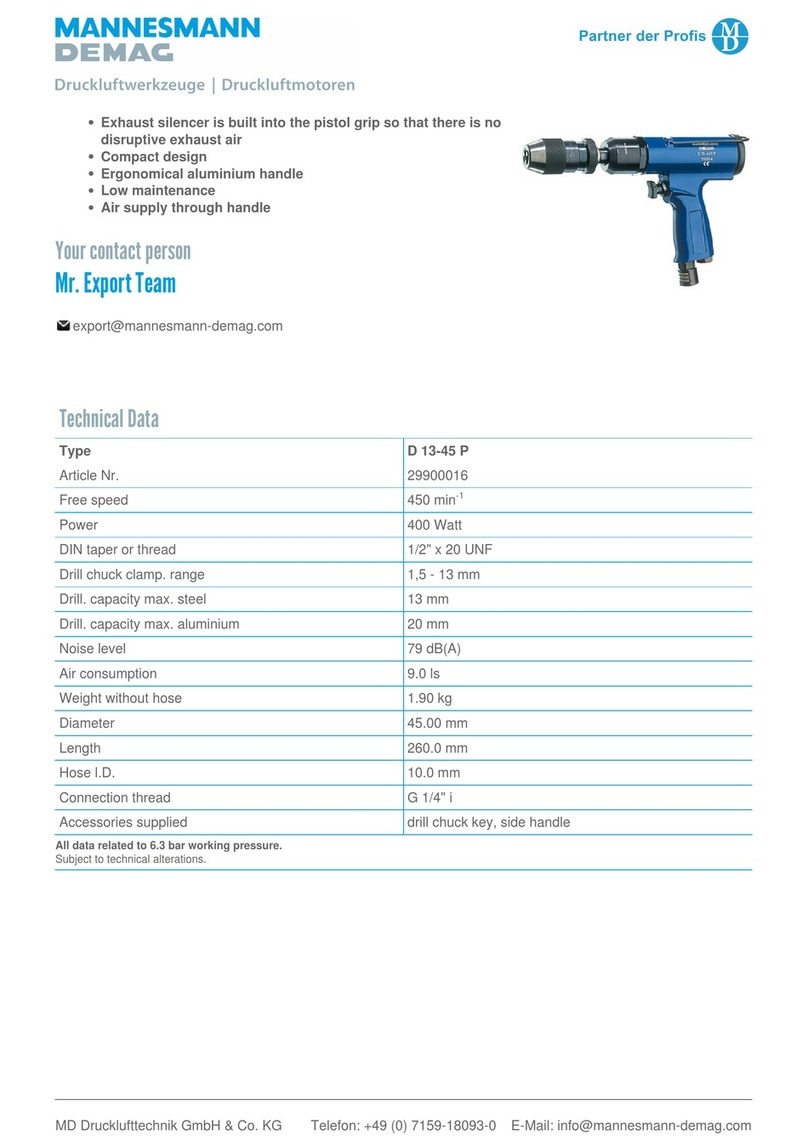
Mannesmann Demag
Mannesmann Demag D 13-45 P operating instructions

Chicago Electric
Chicago Electric 93449 Assembly and operating instructions

ALFRA
ALFRA ROTABEST RB50X Operation instructions

